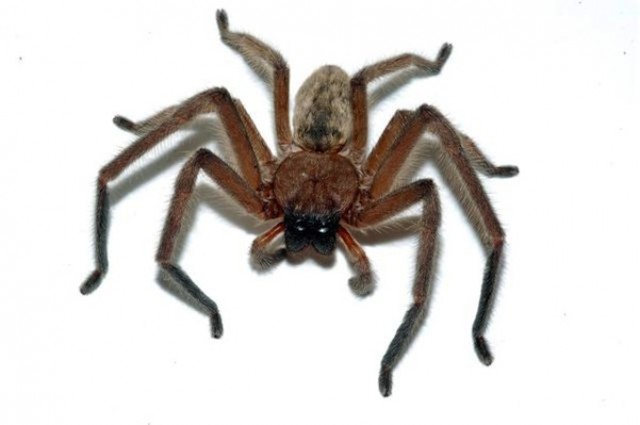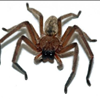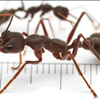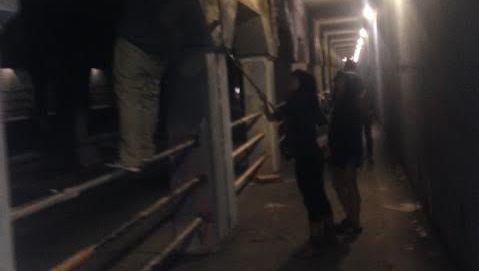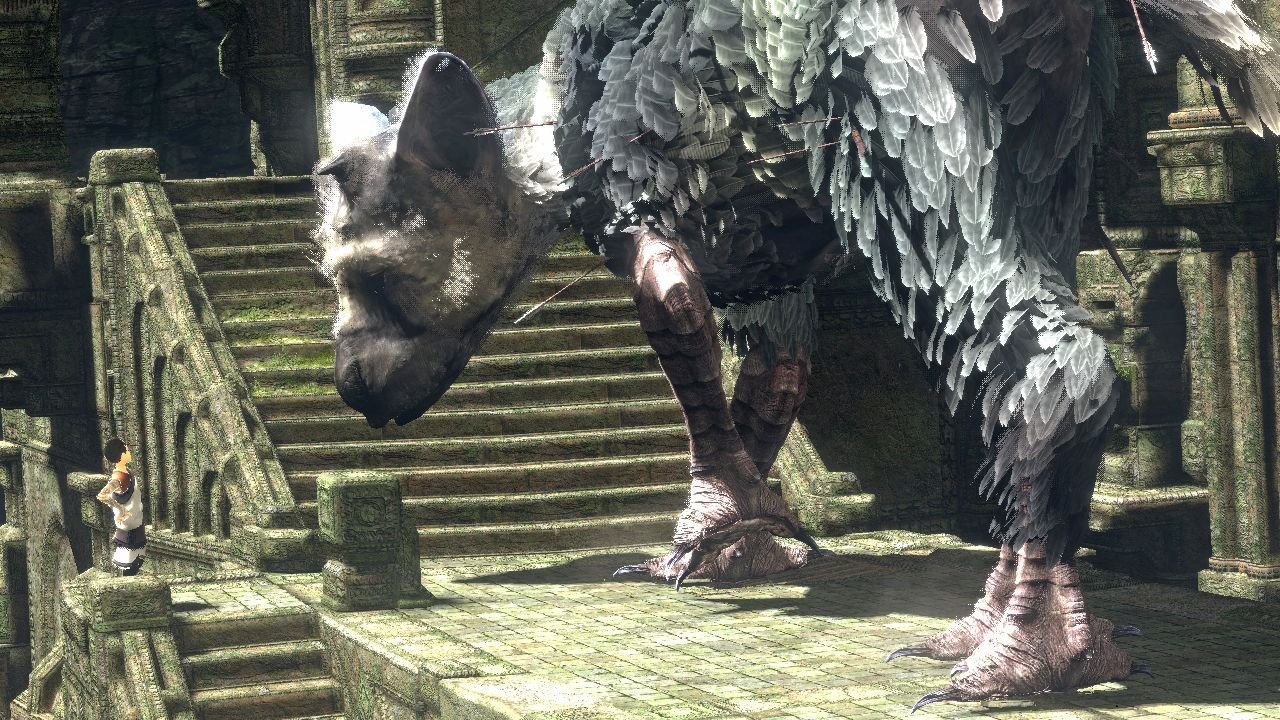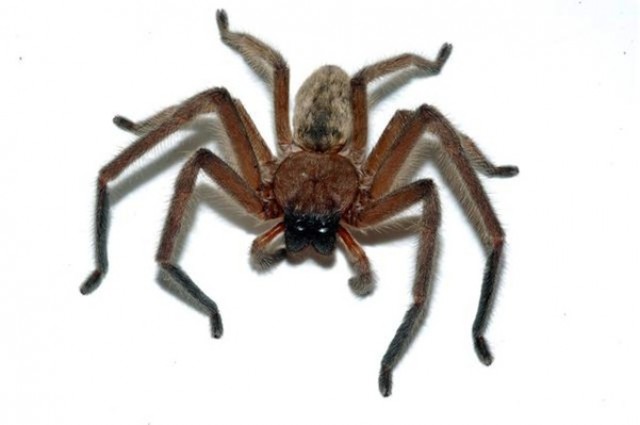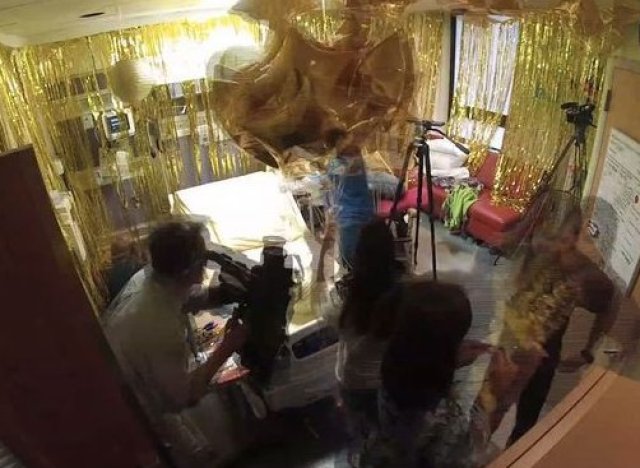Right Now
Ants Use Scorched Earth Tactics Against Spiders.
Ferociously attacking with its sting and its jaws simultaneously, the bulldog ant Myrmecia pyriformis holds the world record for “most dangerous ant.” And in the dry forests of eastern Australia, the ants are the mortal enemies of the social huntsman spider, Delena cancerides. The two species forage at the same time -- starting around twilight and lasting throughout the night -- in the same places. And in this turf war, these ants fight dirty, New Scientist reports.
Rather than weave webs, the social spiders nest under the loose bark of dead trees. Females can grow to the size of your palm (mostly legs though), and she lives together with several generations of her offspring, which adds up to a couple hundred individuals. Colonies of bulldog ants can reach 1,400 strong.
In ecology, interference competition is when two species physically interfere with one another by aggressively trying to exclude the other from habitats or resources. This type of competition often leads to either coexistence or exclusion. But does interference lead to a partitioning of resources? And what happens if the resource is only necessary to one species, but not the other? To investigate, Eric Yip from Cornell set up over 100 nest boxes in the field and watched what happened.
Female spiders spend months maintaining the home while her offspring grow. But when bulldog ants battle their way into the nest, their numbers and ferocity overwhelm the spider and she retreats with her young. But the ants don’t even want to occupy the nest. They just fill it up with twigs, bark, and litter -- making the nests useless for the spiders -- and then they leave.
Of the 120 nest boxes that were colonized by the spiders, seven of them (that’s six percent) were invaded by the ants over a two-month period. "In a couple of instances the adult female was able to kill all the ants," Yip tells New Scientist. But her offspring couldn't because "their fangs can't puncture the ant exoskeleton."
Most of the time, after eliminating spiders from the nest boxes, the ants filled them with debris before leaving. Since the spiders, who can take up to a year to mature, need space to grow, filling the nest up renders it useless. None of the nests were reoccupied during the study.
The work was published in Insectes Sociaux this week.
Ferociously attacking with its sting and its jaws simultaneously, the bulldog ant Myrmecia pyriformis holds the world record for “most dangerous ant.” And in the dry forests of eastern Australia, the ants are the mortal enemies of the social huntsman spider, Delena cancerides. The two species forage at the same time -- starting around twilight and lasting throughout the night -- in the same places. And in this turf war, these ants fight dirty, New Scientist reports.
Rather than weave webs, the social spiders nest under the loose bark of dead trees. Females can grow to the size of your palm (mostly legs though), and she lives together with several generations of her offspring, which adds up to a couple hundred individuals. Colonies of bulldog ants can reach 1,400 strong.
In ecology, interference competition is when two species physically interfere with one another by aggressively trying to exclude the other from habitats or resources. This type of competition often leads to either coexistence or exclusion. But does interference lead to a partitioning of resources? And what happens if the resource is only necessary to one species, but not the other? To investigate, Eric Yip from Cornell set up over 100 nest boxes in the field and watched what happened.
Female spiders spend months maintaining the home while her offspring grow. But when bulldog ants battle their way into the nest, their numbers and ferocity overwhelm the spider and she retreats with her young. But the ants don’t even want to occupy the nest. They just fill it up with twigs, bark, and litter -- making the nests useless for the spiders -- and then they leave.
Of the 120 nest boxes that were colonized by the spiders, seven of them (that’s six percent) were invaded by the ants over a two-month period. "In a couple of instances the adult female was able to kill all the ants," Yip tells New Scientist. But her offspring couldn't because "their fangs can't puncture the ant exoskeleton."
Most of the time, after eliminating spiders from the nest boxes, the ants filled them with debris before leaving. Since the spiders, who can take up to a year to mature, need space to grow, filling the nest up renders it useless. None of the nests were reoccupied during the study.
The work was published in Insectes Sociaux this week.
Sign In to leave a comment
More Posts

Report This Post
Please complete the following requested information to flag this post and report abuse, or offensive content. Your report will be reviewed within 24 hours. We will take appropriate action as described in Findit terms of use.
Thank you. Your abuse report was sent.




